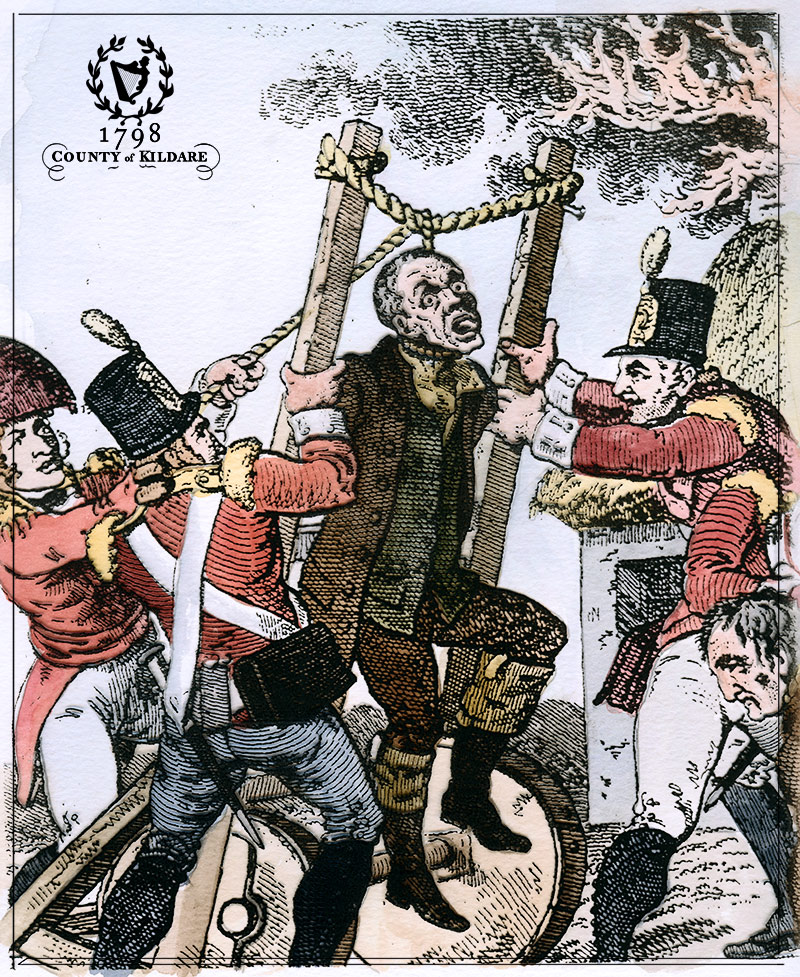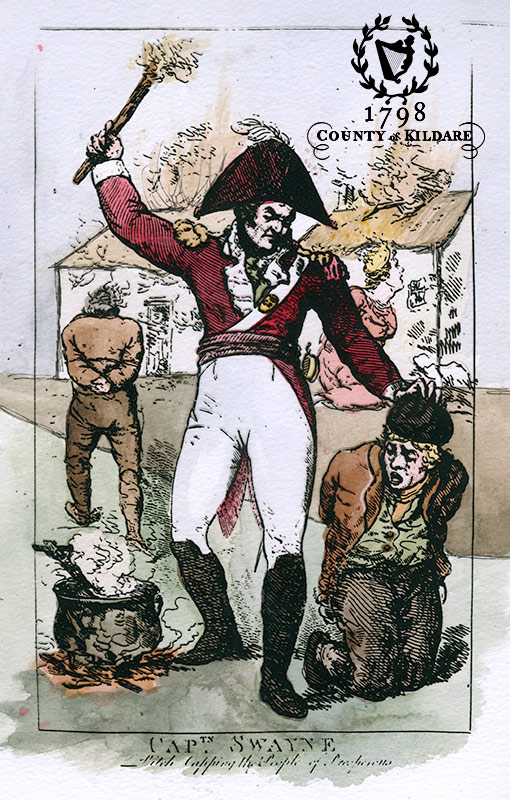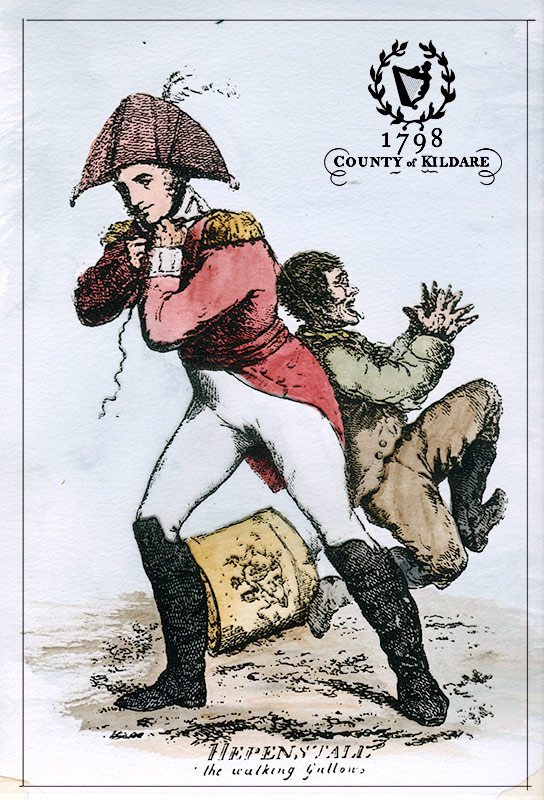Background to Rebellion
Government Repression

Following the arrest of the Leinster Directory, the Government declared martial Law. Flogging, hangings and searches for arms became common place. The army turned its attention on highly organised counties such as Carlow and Kildare. In the more disturbed districts the army were given ‘Free Quarters’. The plundering and punishment terrorised and angered those who fell victim. The Quaker village of Ballitore in South Kildare was plundered. The triangles first appeared in Kildare but were soon in widespread use. Victims were tied to a triangular shaped wooden frame, and were then flogged and tortured.

In Athy the extremities of martial law were rigorously enforced under Colonel Campbell of the 9th Dragoons. He had under his command men who organised the free quarters at Ballitore, Kilkea and the mansion of Fitzgerald of Geraldine. In Athy the triangles were used to torture suspects. Blacksmiths and publicans were those most open to suspicion.
Pitchcapping was another method of torture and this involved the placing of a canvas cap, soaked in pitch or tar, on the head of the victim, then adding gunpowder and setting it on fire. In Prosperous Captain Richard Longford Swayne was noted for his use of the pitchcap. Swayne and his Cork militia terrified the local inhabitants and often resorted to torture to acquire information or boost the return of arms. During the free-quarters the pitchcap was in frequent use. Watty Cox noted “ The first place of notoriety for the use of pitched caps, to any extent was in the vicinity of the little town of Prosperous in the county of Kildare”.

Another method of torture by Swayne was picketing, whereby the victim was left hanging, while standing on sharp pointed stakes, until he gave information. Captain Swayne was later piked to death and his body burned in a tar barrel by rebels under Andrew Farrell and Dr. John Esmond.
Lieutenant Hempenstall was famous for his own cruel method of torture and was better known as the ‘Walking Gallows’. Watty Cox noted “ amongst the monsters which the insurrection act passed in 1796, called into loyal activity, none have surpassed the walking Gallows for atrocity no more distinguished for moral depravity.”

Chronology of repressive measures:
- 1796 saw the introduction of the insurrection and Indemnity Acts and the formation of a Yeomanry force
- 1797 Ulster was proclaimed and pacified
- 12 March 1798 most of leaders of Leinster Directory arrested: Society secretly decide to rise
- March 30 – Country proclaimed
- Mid April – Early May disturbed areas visited at free-quarters; triangles etc., in Kildare.
- May 18th – Plan for rising adopted by United Irishmen and set for Wed. 23rd May.
- Sat. May 19th – Lord Edward arrested.
- Mon. May 21st – Sheares brothers arrested.
- Wed. May 23rd – Men gather at appointed places.
- Thur. May 24th – Rebellion breaks out in Kildare.
